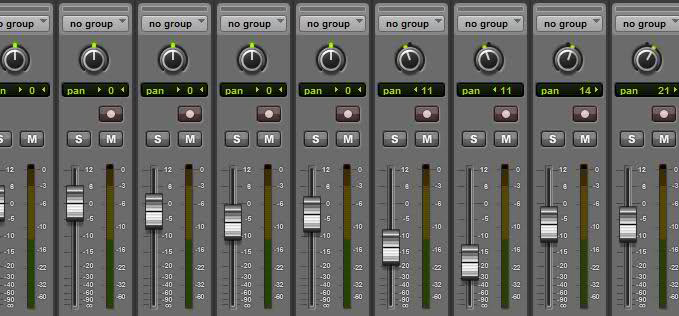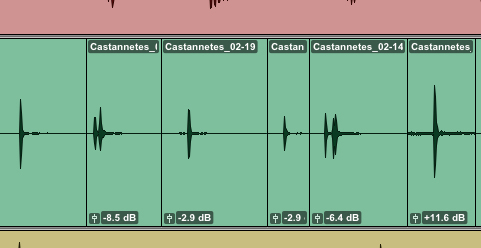
When to bring automation into your mixing workflow
Automation is great in a mix! The ability to sculpt a mix dynamically by bringing emphasis (or de-emphasis) to various elements throughout the song is really powerful. We can even use automation to manipulate the rhythmic feel of sections of a mix. But, in my experience, the point at which we incorporate automation into the mix process can have a big impact on mix workflow.
I like to work with “clip gain” automation at the very beginning of a mix, where I am adjusting the levels of various regions within the audio file. The great thing about this is that the level changes are happening before any of my plugins (or hardware inserts). This allows me to hit dynamic processors like compression with more consistent levels. I am usually not going crazy with this, but if certain drum hits or vocal passages are way out of whack (much higher or lower) than the rest of the track, I will use clip gain to get it into a closer range with the rest of the performance.

After clip gain automation I will generally leave fader automation until the end of the mixing process and I recommend you strongly consider doing the same. The fader automation is the automation that happens after all of our plugins and hardware inserts. There are two big reason why I leave this until the end of the mixing process:
1) One big reason is that starting automation early is just a pain in the butt. If you start doing automation early in the mix, every time you want to make fader adjustments later in the mix you are fighting against the earlier automation moves. Sure, I know there are various strategies to deal with this in your DAW, but they generally add one more layer between the process of you feeling a change needed in the mix and making it happen. For most of my mixing process, I want the experience to feel like improvising a piece of music, where I can have an idea in my head and make it happen quickly. This is one of the reasons mixing on large format consoles can be such a joy; it can feel like playing an instrument! Once I have done most or my intuitive mixing work, in the last 10-15% of the mix process I will get into the final tweaks and start automating my fader moves.
2) The second, and probably the more important reason, is that people will often start using automation to solve problems, when there is actually a better remedy. Like most successful mixers, I use a lot of compression on the individual tracks of my mixes, so by the time the audio hits the fader, so to speak, it is fairly even in terms of “loud parts” and “quiet parts.” Often we can find ourselves in situations where something like a vocal is not present enough in a certain part of the song, so we reach for automation to push the vocal level up in the mix. While that is not empirically wrong, it may not be the best solution. Before pushing up the vocal level in a section with automation it is important to look to see why the vocal lost its presence in that section. Many times it is because another element has been introduced that is fighting the vocal. Before pushing up the vocal level I am looking to see if some new element has a lot of energy in a certain frequency range that competes with the vocal. I am going to see if there are things I can do with subtractive EQ or panning on that new element to solve the conflict, rather than just push up the vocal to overpower the conflict.
In my approach to mixing, I am working to make my song sound great from beginning to end without any automation at all, and then I am using automation for creative reasons at the end of the process. If your mix does not sound great without automation, you most likely have problems that are not related to automation that need to be fixed first.
_
 By the way, if you want to hang out in North Italy for a week and study recording with me in a villa drinking wine and eating home made Italian food, I have a spot left for my 6-day recording boot camp September 24-29, 2018. Get more info HERE.
By the way, if you want to hang out in North Italy for a week and study recording with me in a villa drinking wine and eating home made Italian food, I have a spot left for my 6-day recording boot camp September 24-29, 2018. Get more info HERE.
